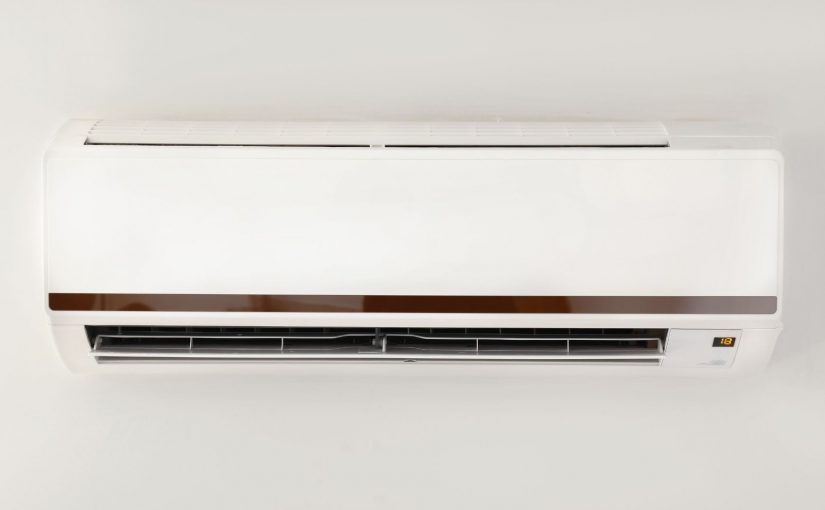Table of Contents
What is Dehumidifier (Dry) Mode in AC?
High Humidity is the number one cause of mildew and mold growth in the home. It is also responsible for increased Allergy symptoms and can be a trigger for an Asthma attack.
Dehumidifier mode, also called Dry Mode, on an AC is the setting that turns on the dehumidifying function of an air conditioner to reduce excess humidity in the air.
When there is too much humidity in the air, the temperature can seem hotter than what it actually is.
Using the dehumidifier/ dry mode on the AC will help reduce the moisture in the air and restore comfortability back to your home.
What is the function of dry mode in AC?
Dry mode in an AC functions like a dehumidifier. Dehumidifiers and air conditioners are actually very similar in the way they work. They both drag air across a set of cooling coils that causes the air to condense.
User Guidelines for AC Dehumidifier (Dry) Mode
| Condition | Dry Mode Usage | Recommended Settings | Notes |
|---|---|---|---|
| High Humidity, Mild Temperature | Yes | Moderate fan speed | Ideal for reducing humidity without overcooling the room. |
| High Humidity, High Temperature | Optional | Combine with cool mode at a higher temperature setting | Helps in maintaining comfort without excessive cooling. |
| Moderate Humidity, High Temperature | No | Use cool mode instead | Dry mode is less effective and unnecessary. |
| Continuous High Humidity | Yes, intermittently | Use periodically to maintain comfort | Prevents overuse and maintains energy efficiency. |
| Night Time or Low Activity | Yes | Lower fan speed, higher temperature | Reduces noise and maintains comfort during less active hours. |
 Air conditioner dry mode vs. dehumidifier
Air conditioner dry mode vs. dehumidifier
The difference is that air conditioners move the air across the cooling coils to cool off the air where is a dehumidifier moves the air across the cooling coils to condense the air but then reheats the air to repeat the process.
Dry mode vs. cool mode
Dry mode on your AC is the air conditioning setting that turns on the dehumidification function of the AC to reduce the humidity in the air.
Cool mode is the setting that cools down the air. Cool mode is the most common setting on an AC. It is the mood of the air conditioner that cools down the room to the temperature that you set the thermostat to.

BLACK+DECKER 10,000 BTU Portable Air Conditioner
3-in-1: Air Conditioner/Dehumidifier/Fan, Remote Control, Dehumidifier
More Info Here
Air conditioner dehumidifier mode
Humidity, especially the excessive humidity that tends to hit in the hottest months can be a real enemy to your air conditioning.
When the relative humidity gets to a certain level, you can feel like the air conditioner is not even on.
And usually what happens is that you run to turn the thermostat down cooler.
But with so much moisture in the air and adding more power to the air conditioner, the results of turning the air conditioner thermostat down usually leads to the unit freezing over.
Then there is no cool air coming from it at all.
Another reason that humidity threatens your AC unit is that your system has to run on overdrive to keep up with the extra demand that the humidity places on it.
But you may be sitting on an air conditioner that has a function to help in those situations. And you might not have even known it.
The function I’m talking about is the air conditioner dehumidifier mode.
The air conditioner dehumidifier mode is usually represented by a raindrop symbol on the thermostat. It is also called the dry mode if you have an air conditioner with this function but it does not say dehumidifier.
Does an air conditioner dehumidify?
When your AC is in dehumidifier mode,
It turns off the cooling function and slows down the fan so that the air conditioning functions as a dehumidifier to reduce the moisture in the air.
Does air conditioning dry out the air?
By reducing the moisture in the air, you can regain comfortability without even having the cool mode running.
Not only will that save you money on energy, it will help save you in the long run by not overworking your air conditioning system.
Best temperature for dry mode
The best temperature to use dry mode is when the humidity is excessive but the actual temperature is not that hot.
The ideal of turning the AC on dry mode is to reduce the moisture level in the air and restore the comfortability of the area without using the cool air mode of the AC.
The function of Dry mode on an AC is to lower the humidity in the room so that the air feels cooler. It does not actually control or utilize the thermostat to achieve a designated temperature.
Dry mode vs. Cool mode power consumption
ACs are one of the biggest energy hogs in your house. Everyone knows how much the utility bill can skyrocket in the summer months because of the power that an air conditioning system uses.
The different modes on an air conditioning unit or not only to help provide you with the most comfort possible in terms of climate control but also in financial terms.
The cool mode on an air conditioner is easily the most expensive to run. And it is the setting that most people tend to use exclusively.
But there are different times when using the cool mode on an air conditioner is not only more expensive, it can’t get the job done as well.
Dry mode on an air conditioner can actually lower your energy bill provided the climate dictates it.
When the humidity is so high that it is overcoming the air conditioning,
Turning the AC dry mode will not only help reduce the humidity in the air and make the air feel more comfortable, it will turn off certain features on the air conditioner that are causing the energy bill to be more expensive.
When the dry mode is functioning, it turns down the cool air and it slows the fan way down.
Which means the power consumption of the air conditioner is way down.
In other words, less power, more money in your pocket.
Not only does humidity cause your air conditioner I do feel like it’s doing less than an adequate job, it also makes your air conditioner overcompensate to try to get the temperature in the room down to a comfortable level.
That means the power consumption in cool mode during times of excessive humidity will actually cost you more.
Air conditioner dry mode in winter.
The dry mode on an air conditioner, though it works like a dehumidifier to a certain point.
But at the end of the day they do not have the full function of a dehumidifier.
A dehumidifier compared to a air conditioner not only condenses the water to capture the humidity, it reheats the air that is released.
An air conditioner simply does not have this capacity.
Even most dehumidifiers call for the temperature to be at least 60 degrees.
Which makes them obsolete during the winter.
Using an air conditioning as a dehumidifier during the winter will not work for that intention, it will most likely cause damage to your unit.
Limitations and Considerations
While the dry mode in AC units can mitigate humidity to some extent, it may not match the efficacy of specialized devices like standalone dehumidifiers.
For instance, the Vellgoo Dehumidifier, acclaimed for its performance in large spaces, comes with user-friendly features such as a washable air filter and an automated pump for water drainage, offering a more tailored approach to humidity control.
Considering such a product could enhance moisture management, especially in highly humid environments, providing a more comprehensive solution than AC dry mode alone.


